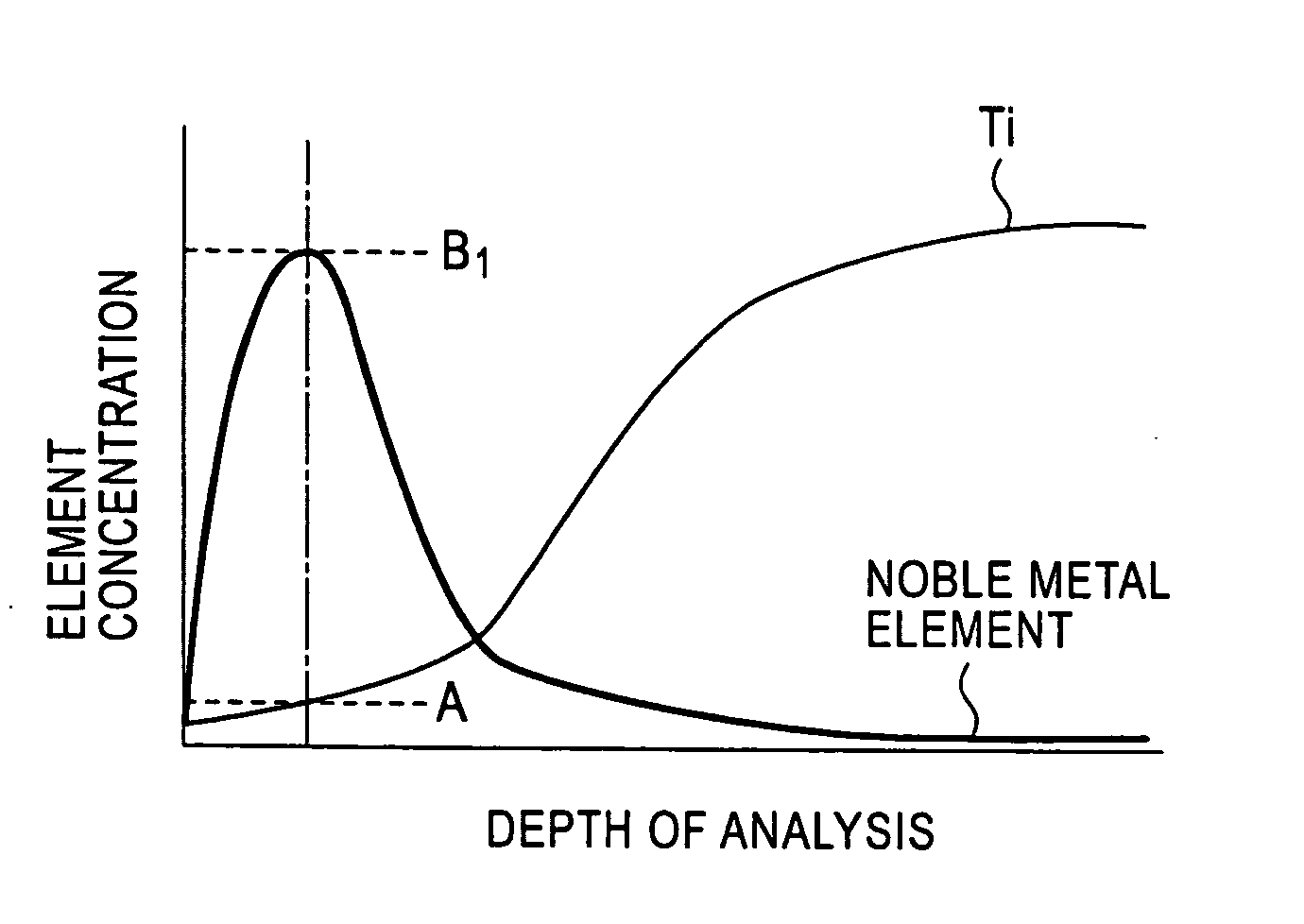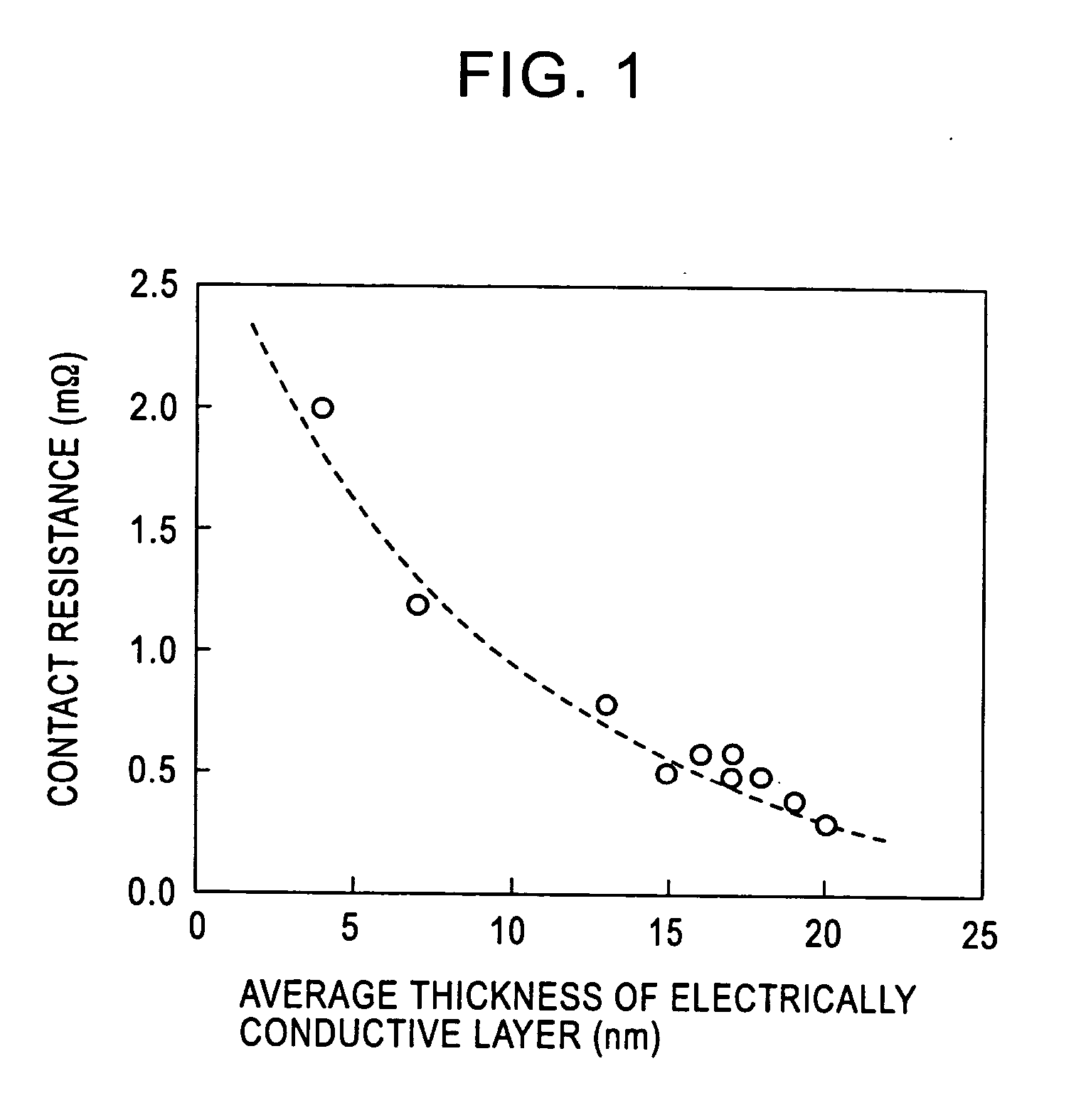Titanium material and method for manufacturing the same
a technology of titanium materials and manufacturing methods, applied in the field of titanium materials, can solve the problems of reducing electrical conductivity and current loss, titanium materials are not suitable as electrode materials without being processed, and current loss, and achieve excellent corrosion resistance and electrical conductivity, excellent recycling efficiency, and excellent electrical conductivity
- Summary
- Abstract
- Description
- Claims
- Application Information
AI Technical Summary
Benefits of technology
Problems solved by technology
Method used
Image
Examples
example 1
[0062] A test piece 30 mm wide by 30 mm long was taken from a titanium alloy cold-rolled sheet (sheet thickness 2 mm) having a composition shown in the following Table 1. The test piece was immersed in a corrosive solution, in which 1 percent by mass HF aqueous solution and 10 percent by mass HNO3 aqueous solution were mixed, at 25° C. for a time shown in Table 1, so that Ti was eluted from the surface of the base material of the test piece, and a beige or blackish brown concentrated layer, in which platinum group elements and oxides thereof are concentrated, was formed on the surface of the base material. Subsequently, the test piece was taken out of the corrosive solution, and was washed with water, followed by drying. Thereafter, the thickness and the contact resistance of the concentrated layer were measured in the following manner. The results thereof are collectively shown in Table 1.
[0063] The thickness of the concentrated layer was measured with an analyzer PHI-670 (produce...
example 2
[0074] A titanium alloy sheet with dimensions of 30×30×1 mm was dry-polished to the level of SiC#400, and was cleaned with acetone. Thereafter, the titanium alloy sheet was immersed in an aqueous solution containing acid. The titanium alloy sheet used at this time, the aqueous solution, the immersion treatment temperature (temperature of aqueous solution), and the immersion time are shown in Tables 2 to 4.
[0075] After the above-described immersion, the concentration of the noble metal elements in the surface layer (noble metal element concentrated layer) of the titanium alloy sheet was measured by the Auger electron spectroscopy (AES). At the same time, the thickness of the concentrated layer was determined as in the above-described Example 1. The contact resistance was measured in the following manner. That is, a gold sheet having a thickness of 0.1 mm was taken as the counterpart of the titanium alloy sheet, and the contact resistance was measured with a four-wire resistance mete...
PUM
| Property | Measurement | Unit |
|---|---|---|
| Temperature | aaaaa | aaaaa |
| Temperature | aaaaa | aaaaa |
| Percent by mass | aaaaa | aaaaa |
Abstract
Description
Claims
Application Information
 Login to View More
Login to View More - R&D
- Intellectual Property
- Life Sciences
- Materials
- Tech Scout
- Unparalleled Data Quality
- Higher Quality Content
- 60% Fewer Hallucinations
Browse by: Latest US Patents, China's latest patents, Technical Efficacy Thesaurus, Application Domain, Technology Topic, Popular Technical Reports.
© 2025 PatSnap. All rights reserved.Legal|Privacy policy|Modern Slavery Act Transparency Statement|Sitemap|About US| Contact US: help@patsnap.com



